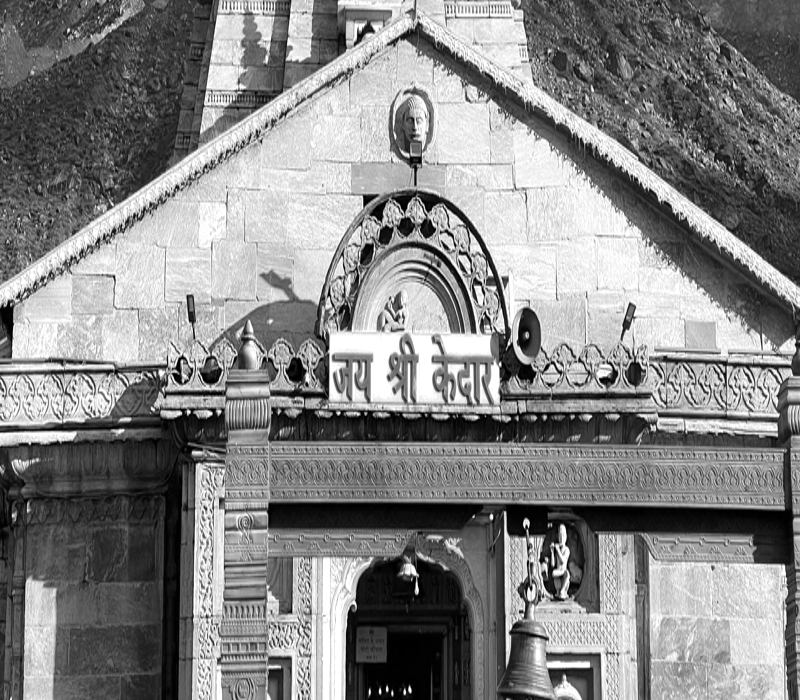- Offices: Dehradun | Dwarka New Delhi
Chorabari Lake, also known as Gandhi Sarovar Sharwadi Tal, is a serene glacial lake nestled at an elevation of approximately 3,900 meters above sea level in the Kedarnath region of Rudraprayag district, Uttarakhand, India. Located about 3 kilometers away from the Kedarnath Temple, this pristine lake is a haven for nature lovers and spiritual seekers alike. Named after Mahatma Gandhi, who is said to have visited the region, the lake’s crystal-clear waters reflect the surrounding snow-capped Himalayan peaks, creating a breathtaking visual spectacle.
The lake derives its name from the Chorabari Glacier, which serves as its primary source. This glacier-fed water body holds immense significance in Hindu mythology and culture, often drawing pilgrims and trekkers seeking solace and adventure. Chorabari Lake is also renowned for its tragic history; it played a significant role in the 2013 Kedarnath floods, a devastating natural disaster that reshaped the region’s landscape and infrastructure. Despite its turbulent past, the lake remains a symbol of natural beauty and resilience, offering visitors a tranquil retreat amidst the Himalayas.
Location and Accessibility
Situated in the Rudraprayag district of Uttarakhand, Chorabari Lake is accessible via a trek from the Kedarnath Temple. The journey to the lake begins in Gaurikund, the base camp for the Kedarnath trek. From Gaurikund, a 16-kilometer trek through rugged terrain and picturesque landscapes leads to Kedarnath Temple. The path to Chorabari Lake extends another 3 kilometres beyond the temple, passing through lush alpine meadows, rocky trails, and scenic vistas.
The nearest airport to Chorabari Lake is Jolly Grant Airport in Dehradun, approximately 239 kilometres away. Rishikesh, located about 221 kilometres from Kedarnath, serves as the nearest railhead. From these points, travelers can hire taxis or board buses to Gaurikund. The final stretch to the lake requires physical endurance and is best undertaken with proper trekking gear and guidance.
Historical Significance
Chorabari Lake is steeped in both mythological and historical importance. According to Hindu mythology, the lake is believed to be the meditation site of Lord Shiva. It is also associated with the Pandavas from the Mahabharata, who are said to have passed through the region during their journey to heaven.
The lake gained its contemporary name, Gandhi Sarovar after a portion of Mahatma Gandhi’s ashes was immersed here. This act imbued the lake with national significance, transforming it into a pilgrimage site for those wishing to pay homage to the Father of the Nation.
Nearby Attractions
Chorabari Lake is surrounded by several attractions that enhance its allure. Visitors to the region often combine their journey to the lake with explorations of these nearby sites:
- Kedarnath Temple: One of the twelve Jyotirlingas dedicated to Lord Shiva, Kedarnath Temple is a significant pilgrimage destination for Hindus. Situated at an altitude of 3,583 meters, the temple’s ancient architecture and spiritual ambiance attract devotees and tourists from across the globe.
- Bhairavnath Temple: Located 500 meters uphill from Kedarnath Temple, Bhairavnath Temple is dedicated to Bhairav, a fierce manifestation of Lord Shiva. The temple offers panoramic views of the Kedarnath valley and is a popular spot for visitors seeking spiritual solace.
- Vasuki Tal: Situated at an altitude of 4,135 meters, Vasuki Tal is a high-altitude lake approximately 8 kilometers from Kedarnath. Surrounded by towering Himalayan peaks, the lake is a favorite among trekkers and nature enthusiasts.
- Gaurikund: The starting point of the Kedarnath trek, Gaurikund is home to natural hot springs and the Gauri Temple, dedicated to Goddess Parvati. Pilgrims often take a holy dip in the springs before commencing their journey.
- Chorabari Glacier: The source of Chorabari Lake, this glacier is a fascinating site for adventure seekers and geologists. It offers a close-up view of the dynamic processes shaping the Himalayan landscape.
- Triyuginarayan Temple: Located 25 kilometers from Kedarnath, this temple is believed to be the site of Lord Shiva and Goddess Parvati’s celestial wedding. The eternal flame burning in the temple’s sanctum is a major attraction.
Boating at Chorabari Lake
Due to its high-altitude location and glacial origin, boating activities are not feasible at Chorabari Lake. The lake remains frozen for a significant part of the year, and its pristine ecosystem demands conservation efforts. Visitors are encouraged to admire the lake’s beauty from its shores and respect the fragile environment by avoiding activities that could disturb the natural balance.
Best Time to Visit
The best time to visit Chorabari Lake is during the summer months, from May to June, and the post-monsoon season, from September to October. These periods offer clear skies, pleasant weather, and accessible trekking routes.
- May to June: During these months, the snow begins to melt, revealing lush green meadows and vibrant flora. The trekking trails are relatively easier to navigate, making it an ideal time for both beginners and seasoned trekkers.
- September to October: After the monsoon rains subside, the region comes alive with a fresh vibrancy. The clear skies provide unobstructed views of the surrounding peaks, and the trekking routes are safe and stable.
Chorabari Lake, with its rich history, spiritual significance, and breathtaking natural beauty, is a must-visit destination in the Kedarnath region. Surrounded by majestic Himalayan peaks and steeped in mythological lore, the lake offers a unique blend of tranquillity and adventure. Whether you’re a pilgrim seeking spiritual fulfilment or a trekker chasing the thrill of the mountains, Chorabari Lake promises an unforgettable experience. By visiting this serene haven responsibly, you contribute to the preservation of its pristine beauty for generations to come.

